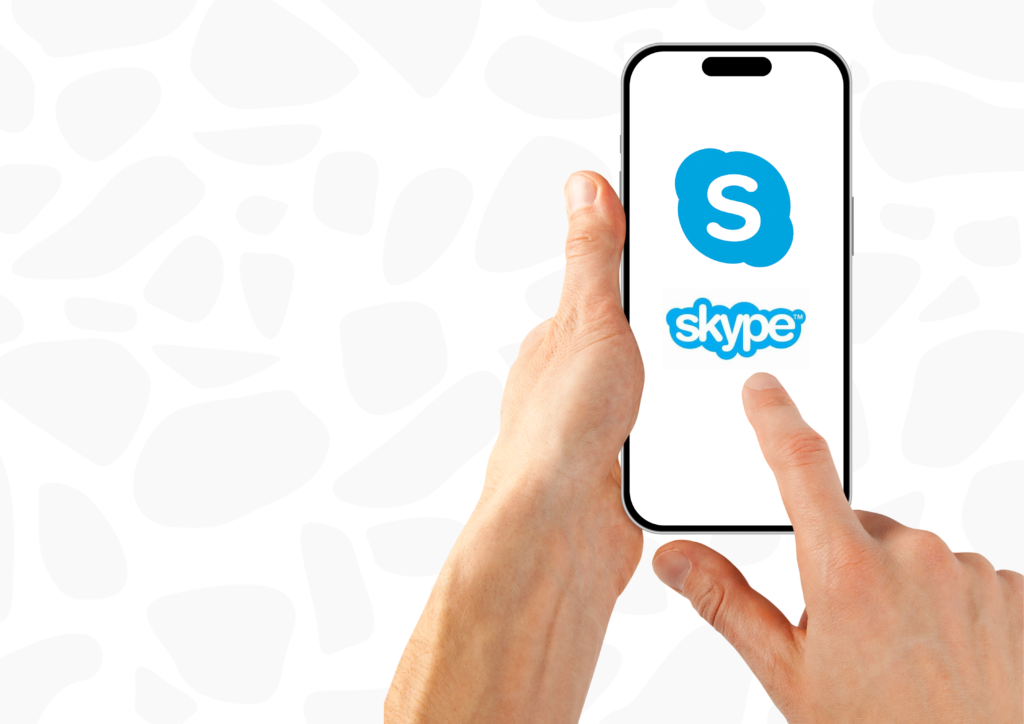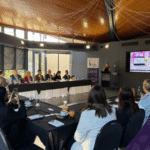Earlier this month, we quietly said goodbye to one of the most iconic names in modern communication, Skype. After more than two decades of “Skyping,” Microsoft has officially pulled the plug on this once-revolutionary communication tool. And while it may not have made headlines like the launch of the iPhone or the rise of ChatGPT, the Skype shutdown 2025 marks the close of a significant chapter in the story of digital communication.
So, how did a platform that was once the go-to for multi-location business meetings, remote job interviews, family chats, and long-distance love fade into the background? And what does that say about how quickly online communication and our expectations around communication platforms have evolved?
Let’s rewind.
The beginning: A tech revolution from Estonia
Skype was born in 2003, long before TikTok, mobile phones with Face ID, or even Facebook. Created by a team of Estonian tech innovators, it promised something game-changing: voice and video calls over an internet connection, completely free.
It didn’t take long for the world to notice. Skype enabled people to connect with friends, family, and colleagues across continents, without worrying about the cost of phone calls and with video. For international students, digital nomads, and global teams, it became more than an app; it was a lifeline and a valuable business tool.
By 2011, Skype’s user base had grown to over 300 million monthly users. That same year, Microsoft acquired Skype for a staggering $8.5 billion. The blue logo became instantly recognisable, and “Skype me” entered everyday language, symbolic of a new era in virtual meetings.
What went wrong?
Fast forward to 2025 and the demise of Skype many are asking “What went wrong?”
The short answer? The world changed and Skype didn’t.
It wasn’t a dramatic exit. Like many once-loved nostalgic tech apps (hello, MSN Messenger and MySpace), Skype slowly lost relevance. As people embraced more intuitive collaboration tools, Skype struggled to keep up.
The COVID-19 pandemic, was a true test for a video conferencing platform. Despite being a challenging time globally for many personally and professionally, it was a video platform’s time to shine! At Purple Giraffe, our team meetings went from in person in the board room at PG HQ to online on video calls. But instead of Skype making a triumphant return, users flocked to Zoom, Google Meet, WhatsApp, and FaceTime. Each of these platforms had things Skype lacked: speed, simplicity, reliability and innovation.
Ironically, one of the biggest reasons for Skype’s demise was Microsoft Teams, a product from the same company. Designed with business users in mind, Teams offered seamless team collaboration, project integration, and even breakout rooms, everything modern communication platforms needed. And as Microsoft shifted focus (and investment) to Teams, Skype became the forgotten cousin.
By 2025, Skype had just 23 million monthly users. A long fall from its once-dominant peak.
The final sign-off
On May 5, 2025, Skype officially went offline. No more downloads. No more updates. No more logging in for a chat across borders.
For those with Skype Credit or subscriptions, Microsoft offered migration options to Teams Free, allowing users to transfer contacts and chat histories. However, features like landline calling didn’t make the jump, leaving some loyal users searching for a Skype alternative.
Users have until January 2026 to export their data. After that, all records and files will be permanently erased, marking the final sign-off for this iconic app.
What this really means
The retiring of Skype is more than just a symbolic end. It reflects the broader evolution of online communication; how fast tools can go from revolutionary to irrelevant.
Skype walked so others could run. It showed us that face-to-face didn’t have to mean in-person. It paved the way for today’s remote communication tools and democratised global conversations. You could pitch an idea across time zones, close deals globally, nail a job interview in another location or chat with your grandmother overseas with video and audio all from your laptop. It improved efficiency, effectiveness and connection and was a trailblazer in its realm.
But as expectations rose, Skype started to fall short. Clunky updates, frequent call drops, and an outdated interface no longer cut it. In the age of slick, mobile-first apps, even the most loyal users began to drift.
Today, people want free versions that are reliable, fast, and user-friendly. Skype didn’t evolve quickly enough to keep up with the rising tide of modern communication platforms.
The takeaway for brands
For anyone in tech, marketing, or business, Skype’s story is a cautionary tale. Being first doesn’t mean being best and certainly doesn’t guarantee staying power. Even the most recognisable communication tools must adapt or risk fading away.
The rise and fall of Skype offers some valuable business lessons and reminds us that:
- listening to user needs is crucial
- communication platforms must evolve consistently
- innovation should never wait until it’s too late.
In today’s digital age, where new platforms can go viral overnight (think Chat GPT which gained 1 million users in the first 5 days and boasted 100 million users in just 3 short months), brands need to remain agile. Because as Skype proved, nostalgia is never enough.
A quiet goodbye
For many of us, Skype wasn’t just an app, it was part of our personal history. Late-night check-ins, university calls, long-distance love stories, or virtual catch-ups with old friends. It gave us a sense of closeness in a world that often felt too big.
So even if we haven’t used it in years, knowing it’s gone feels… strange. Like finding out your favourite café closed. You hadn’t visited in a while, but it still feels like a loss.
Skype, thank you for everything. You changed how we communicated, how we worked, how we loved, and how we stayed connected. You’ve left the chat. But your communication legacy will live on. Thanks for the memories.
As the digital world continues to evolve, staying connected and relevant is more important than ever. If you’re ready to keep your brand in the conversation, Get in touch with us today, we’d love to help.







